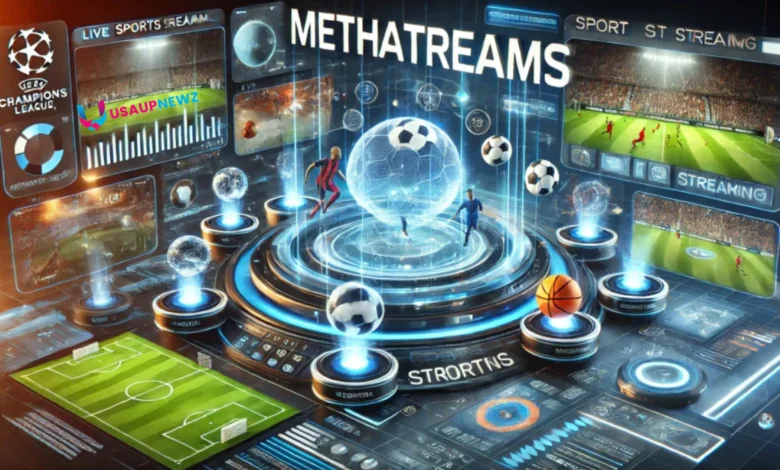
What Are Methatreams?
The term ‘methatreams‘ originates from the interplay of metaphorical and thematic constructs that define abstract ideas within various contexts. It signifies a synthesis of thoughts, emotions, and experiences that manifest as continuous streams of consciousness, often bridging disparate concepts. This notion is particularly prevalent in fields such as psychology, philosophy, and even art, where understanding the fluidity of thought processes can illuminate deeper insights into human cognition and creativity.
In essence, methatreams can be perceived as interpretative frameworks that allow individuals to connect the dots between seemingly unrelated phenomena. For instance, in psychology, this construct can help elucidate how thoughts and emotions are intertwined, guiding therapeutic practices that rely on understanding these connections. Similarly, in literature and the arts, methatreams serve as a means to explore the human experience, showcasing how preferences and perceptions evolve over time.
The Importance of Methatreams in Modern Applications
Methatreams have emerged as a significant concept across various domains, including technology, culture, and social dynamics. Their application provides a framework for understanding complex systems and interactions. One prominent example can be observed in the realm of social media, where methatreams effectively map out relationships and engagement patterns among users. Platforms such as Facebook and Twitter utilize these streams to enhance user experience by suggesting connections based on shared interests or activities.
In technology, methatreams are pivotal in improving data analytics. By allowing for the visualization of data flows, organizations are better equipped to make informed decisions. For instance, in the context of cloud computing, methatreams enable the smooth transfer of data between different services, optimizing workflow efficiency. Companies employing these methodologies often report increased productivity and reduced operational costs, showcasing the practical benefits of integrating methatreams into their processes.
Moreover, the relevance of methatreams extends into cultural settings. As societies grow increasingly interconnected, understanding these streams helps decipher cultural exchanges and influences. For example, the spread of viral content and trends can be analyzed through the lens of methatreams, offering insights into collective behavior and identity formation within communities. As a result, marketers and sociologists alike have begun to harness this concept to gauge audience engagement and cultural shifts.
However, the integration of methatreams into everyday life is not without its challenges. Privacy concerns arise as data saturation increases, leading to ethical dilemmas regarding user consent and data ownership. Furthermore, the complexity of interpreting these streams can often pose difficulties for stakeholders unfamiliar with the intricacies of data analysis. A comprehensive understanding of methatreams is essential to navigate these challenges effectively.
In conclusion, the significance of methatreams in modern applications cannot be understated. Whether in technology, culture, or social dynamics, recognizing the benefits and challenges associated with these streams is crucial for effective integration into contemporary life.
Strategies for Leveraging Methatreams Effectively
To unlock the potential of methatreams in various domains, individuals and organizations must adopt strategic approaches tailored to their specific needs. These strategies can enhance creativity, improve problem-solving, and foster collaboration—key benefits of applying methatreams in daily operations.
First, individuals should start by identifying their core objectives. By clearly defining what they hope to achieve with methatreams, whether it’s brainstorming new ideas, streamlining processes, or enhancing learning, they can focus their efforts more effectively. Creating a structured environment for exploration encourages deeper engagement and clarity in thought.
For businesses, leveraging methatreams can enhance team dynamics and innovation. One effective strategy is to implement regular brainstorming sessions that embrace the principles of methatreams. During these sessions, team members should be encouraged to think divergently without hesitation. By promoting a culture that respects all contributions, businesses can tap into the collective wisdom of their workforce, leading to innovative solutions that may not have emerged in traditional settings.

Educators, on the other hand, can utilize methatreams to foster an interactive learning environment. Incorporating activities that align with methatreams allows students to explore concepts in a multi-faceted manner. For instance, group projects that prompt students to connect ideas from different subjects can help them see the interrelatedness of knowledge and enhance their critical thinking skills.
Additionally, staying informed on the latest research and expert insights can provide deeper understanding and new ideas on utilizing methatreams effectively. Engaging with thought leaders in this field can inspire practitioners to adopt innovative approaches and refine their existing strategies, creating a dynamic, adaptive framework for utilizing methatreams in personal and professional settings.
By implementing these tactics focused on the strategic application of methatreams, individuals and organizations alike can maximize their creative potential and achieve their objectives more efficiently. In conclusion, understanding how to leverage methatreams effectively is crucial for gaining their full benefits across various spheres of life.
Future Trends: The Evolution of Methatreams
The concept of methatreams, while rooted in current methodologies and frameworks, is poised for significant evolution in the near future. As society increasingly embraces digital transformation and the quest for greater efficiency, several emerging trends indicate how methatreams may develop. Innovations in technology, especially artificial intelligence and machine learning, are beginning to influence the way we understand and utilize methatreams, pushing the boundaries of this concept to new heights.
One notable trend is the integration of virtual and augmented reality (VR/AR) with methatreams. As these technologies become more mainstream, the potential for immersive experiences can significantly enhance the practical application of methatreams. For example, training programs leveraging VR may simulate real-world scenarios, allowing individuals to engage with methatreams in a controlled yet dynamic environment. This could lead to more effective learning outcomes and a deeper comprehension of complex processes.
Furthermore, ongoing research in behavioral psychology and neuroscience continues to shed light on the cognitive aspects of methatreams. Understanding how individuals process information and adapt to new methodologies can inform the ways in which methatreams are structured and implemented. With insights from these fields, educators and trainers can tailor their approaches, ensuring that methatreams align better with the learning styles of diverse populations.
As we look toward the horizon, it is also essential to consider the potential societal implications of these trends. The evolution of methatreams may not only reshape personal development but also influence interpersonal dynamics within various professional spheres. Engaging critically with these advancements will help us navigate the complexities of this transformation, ensuring that the benefits of methatreams are maximized while potential pitfalls are addressed. This ongoing dialogue will be vital as we collectively redefine success and adaptability in an ever-changing world.



